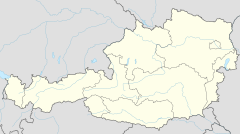| Lusthaus (Vienna) | |
|---|---|
 The Lusthaus (2014) | |
| General information | |
| Address | Freudenau 254 |
| Town or city | 1020 Vienna |
| Country | Austria |
| Coordinates | 48°11′33″N 16°26′20″E / 48.19250°N 16.43889°E |
| Opened | 1538 |
| Renovated | 1948 |
| Website | |
| www | |

The Lusthaus is a historic building in Prater park in the Leopoldstadt district of Vienna, Austria. It is located at the southeastern end of Prater Avenue, near the Freudenau racecourse (German: Galopprennbahn Freudenau).
First mentioned in 1560 as Casa Verde, the green summer house served as a hunting lodge in Vienna's Prater, which was then a hunting ground. It was built in 1538, at the location where Prater Avenue met the Danube Canal. The Lusthaus was on the water until 1834, when the Danube Canal was moved.
After the Prater was opened to the public in 1766, the summer house was rebuilt from 1781 to 1783. It served as the location for large celebrations and festivities, such as the imperial celebrations to mark the first anniversary of the Battle of Leipzig, in which Napoleon was defeated.
In the 19th century, the Lusthaus, as well as the entire Prater, was a popular meeting place for the nobility and bourgeoisie. During the First World War, the military bridge guard tasked with protecting the Danube bridge from sabotage was stationed in the summer house. In the inter-war period marked by economic instability and poverty, the composition of its patrons shifted; the Lusthaus then served as a bar with dance and music. During the Second World War, the Lusthaus was almost completely destroyed by bombings in 1944 and 1945. However, by 1948, a decision was taken to rebuild the building, and the city of Vienna earmarked a sum of 350,000 schillings for its repair.[1] During reconstruction, the building was restored to its 18th-century shape.[2] In October 1949, the Lusthaus was reopened.
Today, the Lusthaus houses a coffeehouse and a restaurant.
References
- ^ "Wien im Rückblick – 10. September 1948, Das Lusthaus im Prater wird wieder aufgebaut" [Vienna in review - September 10, 1948: The Lusthaus in the Prater is rebuilt] (in German). September 1948. Archived from the original on April 9, 2014. Retrieved August 23, 2014.
- ^ Zinsler, Erich (2000). Das Lusthaus im Wiener Prater: Zur Geschichte eines fast vergessenen Wiener Wahrzeichens [The Lusthaus in Vienna's Prater: The history of an almost-forgotten Viennese landmark] (in German). Vienna: Wiener Geschichtsblätter.
Further reading
- Weller, Franz (1880). Die kaiserlichen Burgen und Schlösser in Wort und Bild [The imperial castles and palaces in words and pictures] (in German). Vienna: Hof-Buchdruckerei. Retrieved August 23, 2014.


